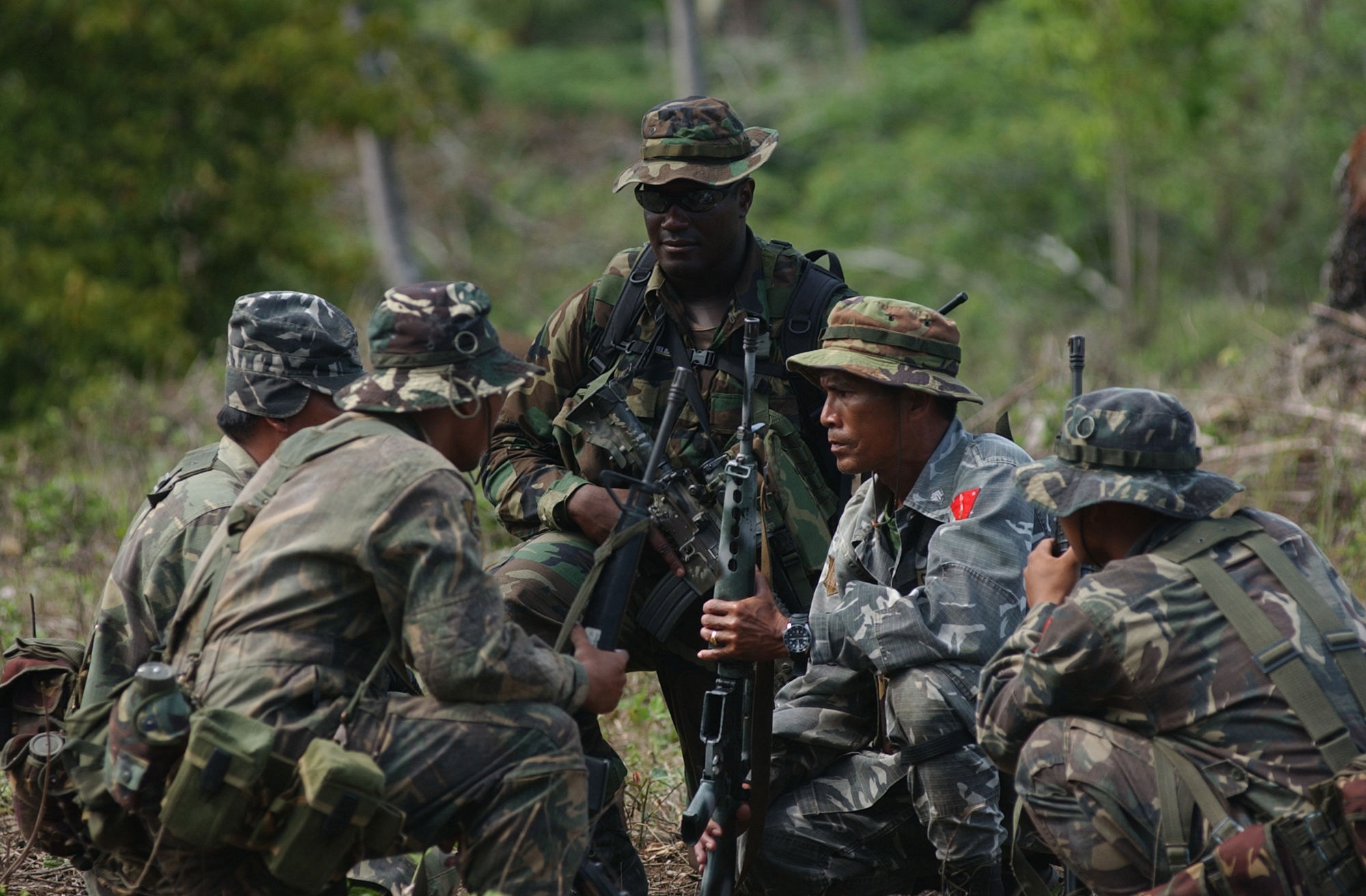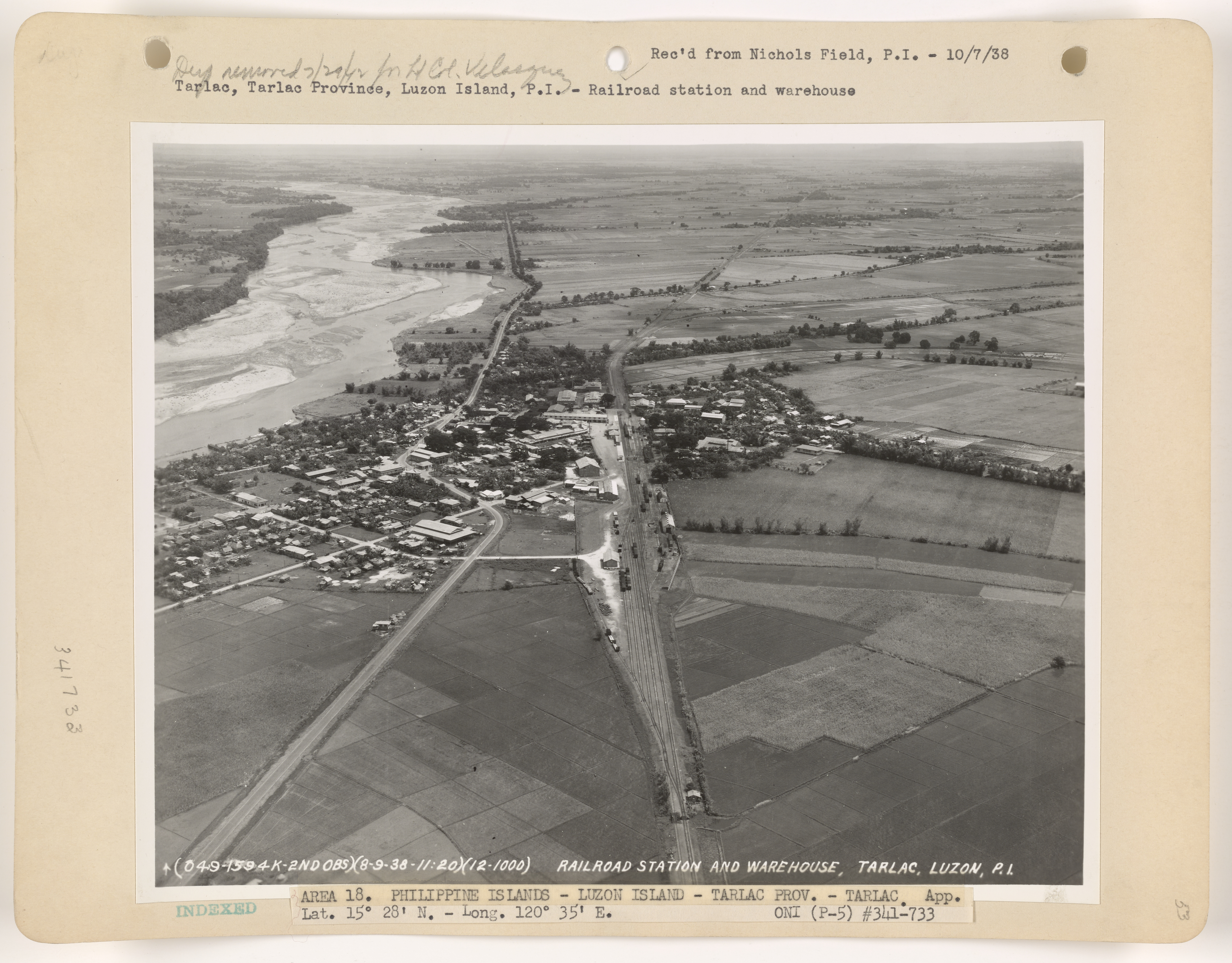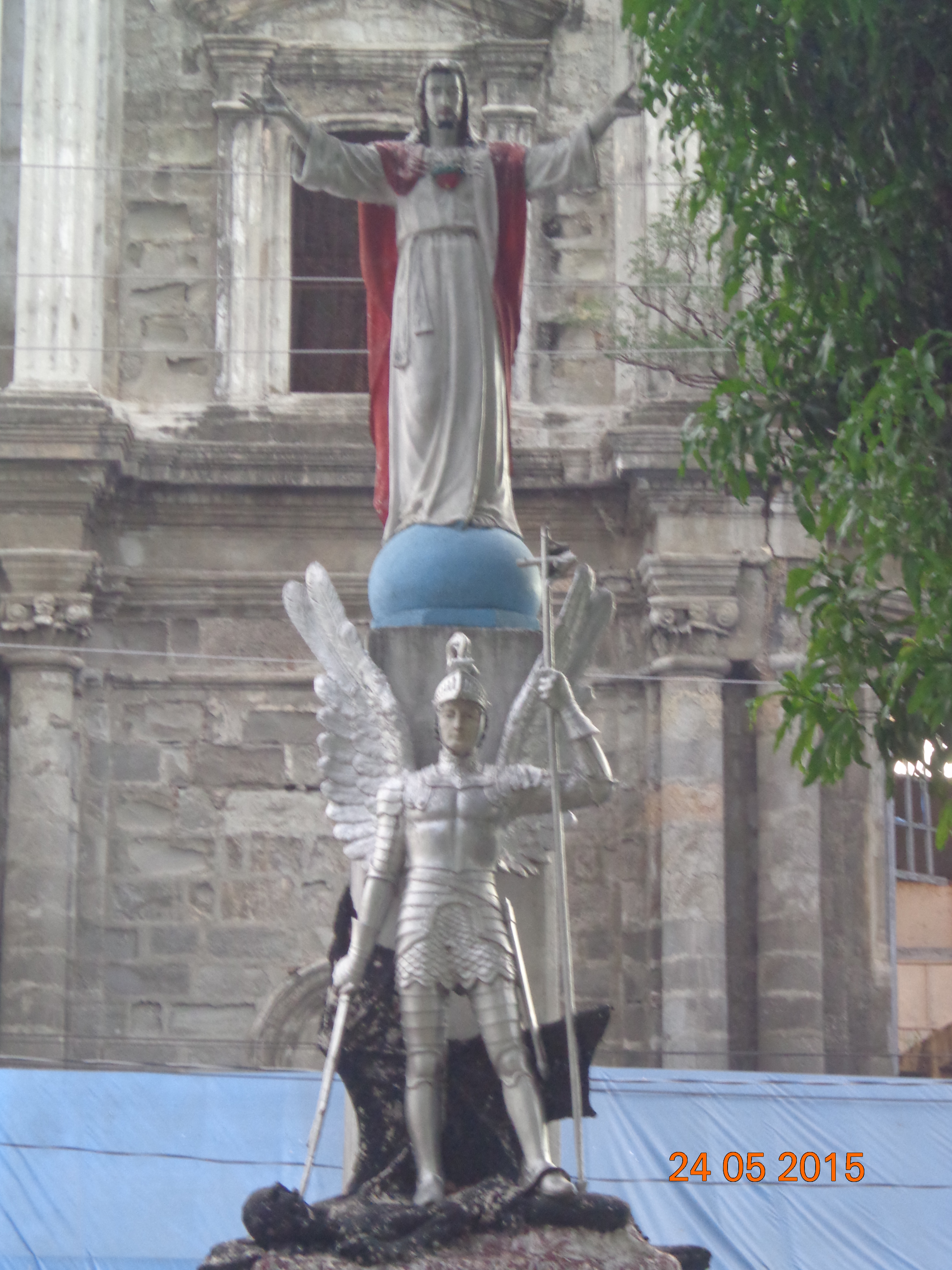|
Tarlac (province)
Tarlac, officially the Province of Tarlac ( pam, Lalawigan ning Tarlac; pag, Luyag/Probinsia na Tarlac; ilo, Probinsia ti Tarlac; tgl, Lalawigan ng Tarlac; ), is a landlocked province in the Philippines located in the Central Luzon region. Its capital is the city of Tarlac. It is bounded on the north by the province of Pangasinan, Nueva Ecija on the east, Zambales on the west and Pampanga in the south. The province comprises three congressional districts and is subdivided into 17 municipalities and one city, Tarlac City, which is the provincial capital. The province is situated in the heartland of Luzon, in what is known as the Central Plain also spanning the neighbouring provinces of Pampanga, Pangasinan, Nueva Ecija and Bulacan. Tarlac covers a total land area of . Early in history, what came to be known as Valenzuela Ranch today was once a thickly-forested area, peopled by roving tribes of nomadic Aetas who are said to be the aboriginal settlers of the Philippines, and ... [...More Info...] [...Related Items...] OR: [Wikipedia] [Google] [Baidu] |
Tarlac City
Tarlac City, officially the City of Tarlac ( pam, Lakanbalen ning Tarlac; pag, Siyudad na Tarlac; ilo, Siudad ti Tarlac; fil, Lungsod ng Tarlac ), is a 1st class component city and capital of the province of Tarlac, Philippines. According to the 2020 census, it has a population of 385,398 people. The city was proclaimed as a highly urbanized city by the former President Gloria Macapagal Arroyo, but the decision was opposed by the provincial government. History Tarlac's first settlers came from Bacolor, Pampanga. They cleared the area, fertilised the soil, and then established their settlement here in 1788. This small community of settlers experienced rapid population growth, as settlers from Bataan, Pampanga and Zambales moved into the area. The Kapampangan language, which is the dialect of Pampanga, became the native language of this town. Roads and barrios were built over the following decades through hard work of its residents. Following the foundation of the provinc ... [...More Info...] [...Related Items...] OR: [Wikipedia] [Google] [Baidu] |
Camiling, Tarlac
Camiling, officially the Municipality of Camiling, ( pag, Baley na Camiling; ilo, Ili ti Camiling; tl, Bayan ng Camiling) is a 1st class municipality in the province of Tarlac in the Philippines. According to the 2020 census, it has a population of 87,319 people. Camiling is one of the fastest-growing towns of Tarlac when it comes to income and economy. It is also considered one of the richest when it comes to cultural heritage in the entire province. The town is also dubbed to be the ''"Old Lady in the Northwestern province of Tarlac"'' because it is one of the oldest municipality created by the Spanish government under the province of Pangasinan where it previously included the former barrio of Mayantoc, San Clemente, and Santa Ignacia. The municipality also features cultural antiquity such as its churches, ancestral houses, and ruins. However, the baroque church of Camiling has yet to be restored after 20 years since a fire burned its interior. The inside of the church, one ... [...More Info...] [...Related Items...] OR: [Wikipedia] [Google] [Baidu] |
Santa Ignacia, Tarlac
Santa Ignacia, officially the Municipality of Santa Ignacia ( pag, Baley na Santa Ignacia; ilo, Ili ti Santa Ignacia; tl, Bayan ng Santa Ignacia), is a 2nd class municipality in the province of Tarlac, Philippines. Santa Ignacia has a total land area of . It is composed of 24 barangays two of which (Poblacion East and Poblacion West) are located in the urban area while the rest of 22 barangays are located in the rural areas. According to the 2020 census, it has a population of 51,626 people. Santa Ignacia is from provincial capital Tarlac City and from Manila. Geography Barangays Santa Ignacia is politically subdivided into 24 barangays. * Baldios * Botbotones * Caanamongan * Cabaruan * Cabugbugan * Caduldulaoan * Calipayan * Macaguing * Nambalan * Padapada * Pilpila * Pinpinas * Poblacion ''Poblacion'' (literally "town" or "settlement" in Spanish language in the Philippines, Spanish; ) is the common term used for the administrative center, central, downtown ... [...More Info...] [...Related Items...] OR: [Wikipedia] [Google] [Baidu] |
San Manuel, Tarlac
San Manuel, officially the Municipality of San Manuel ( ilo, Ili ti San Manuel; pag, Baley na San Manuel; tl, Bayan ng San Manuel), is a municipality in the province of Tarlac, Philippines. According to the 2020 census, it has a population of 28,387 people. The town of San Manuel is a typically rural community located at the northernmost horn of the Province of Tarlac. Ilocano, Kapampangan and Pangasinan are commonly spoken, with Tagalog and English as official languages used for secondary education, business and governance. The municipality is known to have the best corn quality in the country which they celebrate every February during their Mais Festival. From Manila, the town is accessible via the MacArthur Highway, or via the NLEX (North Luzon Expressway), SCTEX ( Subic-Clark-Tarlac Expressway) and TPLEX (Tarlac–Pangasinan–La Union Expressway); it is the last town of Tarlac before entering the town of Rosales in the province of Pangasinan. History When the barrio of S ... [...More Info...] [...Related Items...] OR: [Wikipedia] [Google] [Baidu] |
San Jose, Tarlac
San Jose, officially the Municipality of San Jose ( pam, Balen ning San Jose; tl, Bayan ng San Jose), is a 3rd class municipality in the province of Tarlac, Philippines. According to the 2020 census, it has a population of 41,182 people. It was created into a municipality pursuant to Republic Act No. 6842, ratified on April 21, 1990; taken from the municipality of Tarlac. It is also the largest municipality of the province in terms of land area. Monasterio de Tarlac is located in this municipality. Geography Barangays San Jose is politically subdivided into 13 barangay A barangay (; abbreviated as Brgy. or Bgy.), historically referred to as barrio (abbreviated as Bo.), is the smallest administrative division in the Philippines and is the native Filipino term for a village, district, or ward. In metropolitan ...s: * Burgos * David * Iba * Labney * Lawacamulag * Lubigan * Maamot * Mababanaba * Moriones * Pao * San Juan de Valdez * Sula * Villa Aglipay Climate Demogra ... [...More Info...] [...Related Items...] OR: [Wikipedia] [Google] [Baidu] |
San Clemente, Tarlac
San Clemente, officially the Municipality of San Clemente ( pag, Baley na San Clemente; ilo, Ili ti San Clemente; tl, Bayan ng San Clemente), is a 5th class municipality in the province of Tarlac, Philippines. According to the 2020 census, it has a population of 13,181 people. Geography San Clemente borders the provinces of Pangasinan to the north and northwest and Zambales to the west. Like Santa Ignacia and Mayantoc, it is a former part of Camiling. San Clemente is from the provincial capital Tarlac City and from Manila. Barangays San Clemente is politically subdivided into 12 barangays. * Balloc * Bamban * Casipo * Catagudingan * Daldalayap * Doclong 1 * Doclong 2 * Maasin * Nagsabaran * Pit-ao * Poblacion ''Poblacion'' (literally "town" or "settlement" in Spanish; ) is the common term used for the administrative center, central, downtown, old town or central business district area of a Philippine city or municipality, which may take up the ... Norte ... [...More Info...] [...Related Items...] OR: [Wikipedia] [Google] [Baidu] |
Ramos, Tarlac
Ramos, officially the Municipality of Ramos ( ilo, Ili ti Ramos; pag, Baley na Ramos; tgl, Bayan ng Ramos), is a 5th class municipality in the province of Tarlac, Philippines. According to the 2020 census, it has a population of 22,879 people. Etymology Ramos, formerly named Bani, was a barrio of the town of Paniqui from 1878 to December 31, 1920. On January 1, 1921, Bani became a town and was renamed "Ramos" in memory of Gov. Alfonso Ramos who first initiated the creation of the town. Geography Barangays Ramos is politically subdivided into 9 barangays. * Coral-Iloco * Guiteb * Pance * Poblacion ''Poblacion'' (literally "town" or "settlement" in Spanish language in the Philippines, Spanish; ) is the common term used for the administrative center, central, downtown, old town or central business district area of a Philippines, Philippi ... Center * Poblacion North * Poblacion South * San Juan * San Raymundo * Toledo Climate Demographics In the 2020 census, the popul ... [...More Info...] [...Related Items...] OR: [Wikipedia] [Google] [Baidu] |
Pura, Tarlac
Pura, officially the Municipality of Pura ( pag, Baley na Pura; ilo, Ili ti Pura; tl, Bayan ng Pura), is a 4th class municipality in the province of Tarlac, Philippines. According to the 2020 census, it has a population of 25,781 people. Geography The municipality of Pura is located at the northeastern part of the Province of Tarlac, surrounded by the municipalities of Ramos (about 5 km to the north), Victoria (6.5 km to the south), Gerona (6 km to the west), and Guimba in Nueva Ecija (14 km to the east). It is about from the provincial capital Tarlac City, from the regional center San Fernando, Pampanga, from Clark Special Economic Zone (CSEZ) in Angeles City, and north of Manila. Pura has a total land area which represents 1.02% of the entire provincial area. It comprises 16 barangays of which barangays Poblacion 1, 2, and 3 are considered urban area and the rest are considered rural. The land area per barangay is shown in the table below. It is one o ... [...More Info...] [...Related Items...] OR: [Wikipedia] [Google] [Baidu] |
Paniqui, Tarlac
Paniqui, officially the Municipality of Paniqui ( ilo, Ili ti Paniqui; pag, Baley na Paniqui; tgl, Bayan ng Paniqui), is a 1st class municipality in the province of Tarlac, Philippines. According to the 2020 census, it has a population of 103,003 people. It is the birthplace of the 11th President of the Philippines, Corazon Aquino. Etymology Paniqui is a Hispanized term derived from the Ilocano word "''pampaniki''" which means " bat", since the town has caves that house bats. History The birth of Paniqui could be traced way back in 1712 when the provincial government of Pangasinan sent a group of men south of Bayambang, Pangasinan for the expansion of the Christian faith. The pioneering group was led by two brothers, Raymundo and Manuel Paragas of Dagupan and established the Local Government in a Sitio called "manggang marikit" (mango of an unmarried woman). Surprisingly, in this sitio, there is a great number of mammals called by Ilocanos "pampaniki" and it was from this ter ... [...More Info...] [...Related Items...] OR: [Wikipedia] [Google] [Baidu] |
Moncada, Tarlac
Moncada, officially the Municipality of Moncada ( pag, Baley na Moncada; ilo, Ili ti Moncada; tl, Bayan ng Moncada), is a 1st class municipality in the province of Tarlac, Philippines. According to the 2020 census, it has a population of 62,819 people. The economy is primarily based on agriculture with rice, corn, vegetables, root crops, watermelons, and mangoes as major products. The fishery sector, once a vibrant source of food and income, needs rehabilitation after the onslaught of lahar flows resulting from the Mount Pinatubo eruption. There is a growing retail and service sector in the poblacion along the national highway. Light industries are yet to evolve in the municipality to generate much needed employment. Ilocano, Kapampangan, and Pangasinan are commonly spoken, with Tagalog and English as official languages used for secondary education, business and governance. Moncada is from Manila and is from the provincial capital, Tarlac City. It is accessible via the MacAr ... [...More Info...] [...Related Items...] OR: [Wikipedia] [Google] [Baidu] |
Mayantoc, Tarlac
Mayantoc, officially the Municipality of Mayantoc ( pag, Baley na Mayantoc; ilo, Ili ti Mayantoc; tl, Bayan ng Mayantoc), is a 3rd class municipality in the province of Tarlac, Philippines. According to the 2020 census, it has a population of 32,597 people. It is nestled in the foothills of the Zambales Mountains where the Camiling River originates and provides many scenic picnic and swimming sites, making it known as the summer capital of the province. The most common road to Mayantoc starts at "Crossing Mayantoc", at the national highway to Camiling, Tarlac just after the then Tarlac College of Agriculture (now the Tarlac Agricultural University) campus. Etymology The town got its name after a palm called 'yantoc' due to its abundance in the place. History The first settlers of Mayantoc before the coming of Christian migrants were the negritos of the Abiling tribe. As they arrived in great numbers, so the natives were soon forced to move deeper into the forest areas of the Z ... [...More Info...] [...Related Items...] OR: [Wikipedia] [Google] [Baidu] |
La Paz, Tarlac
La Paz, officially the Municipality of La Paz ( pam, Balen ning La Paz; tl, Bayan ng La Paz), is a 2nd class municipality in the province of Tarlac, Philippines. According to the 2020 census, it has a population of 68,952 people. History The early history of La Paz is unclear. Legends state that there was an old pueblo called " Cama Juan" situated along the bank of the Chico River, bordering the province of Tarlac and Nueva Ecija. When the Chico River overflowed during a storm, a great flood swept the entire pueblo during the night. The flood is said to have devastated the area, claiming many lives. This forced the inhabitants of "Cama Juan" to evacuate. The old site (Cama Juan) is known as "Balen Melakwan" or "Abandoned Town". The inhabitants chose a field of evergreen grass and shrubbery on which to rebuild, which they named "Matayumtayum". Towards the end of the nineteenth century, Francisco Macabulos and Captain Mariano Ignacio selected a more centrally located site for t ... [...More Info...] [...Related Items...] OR: [Wikipedia] [Google] [Baidu] |



